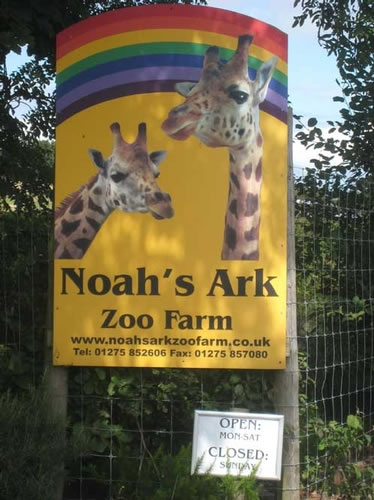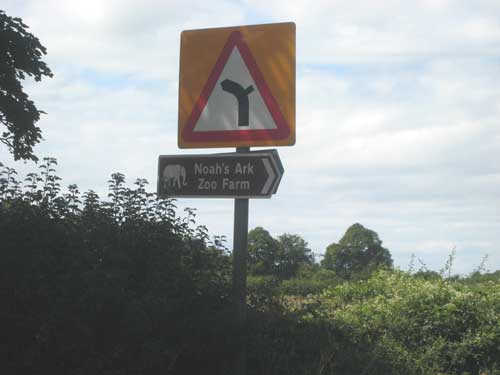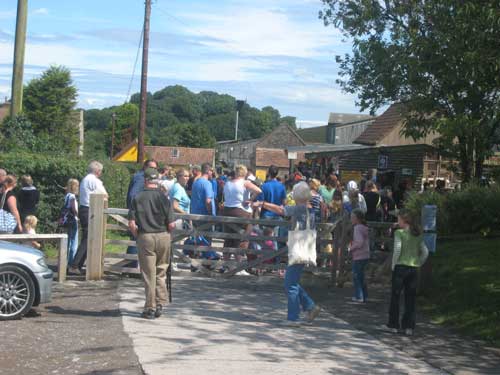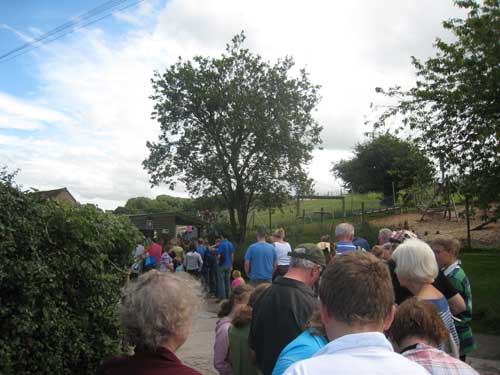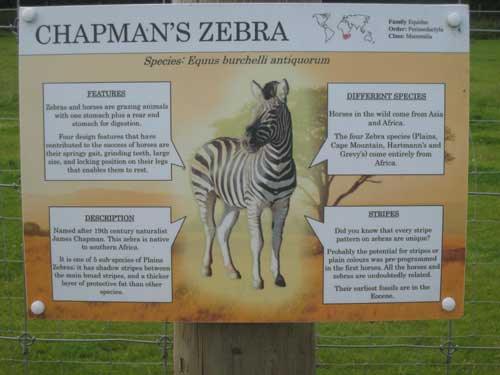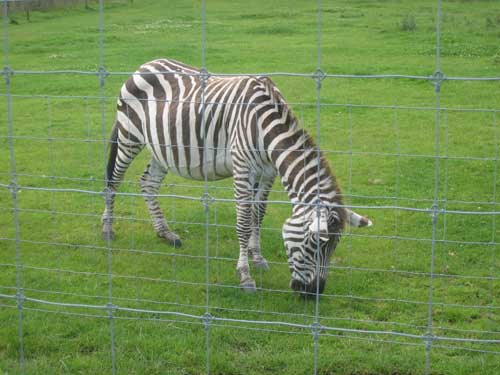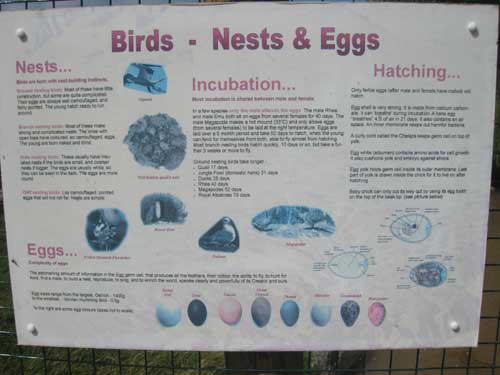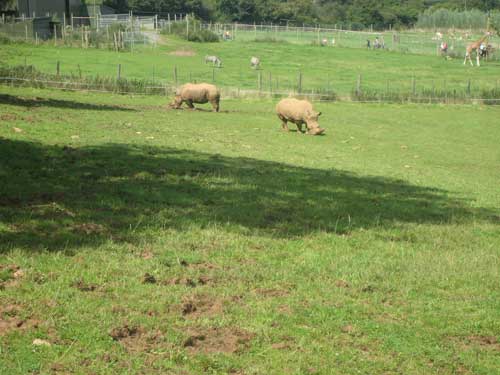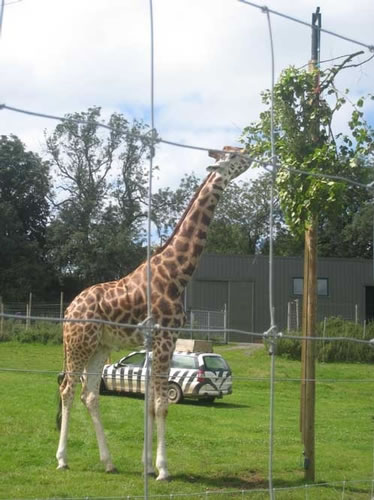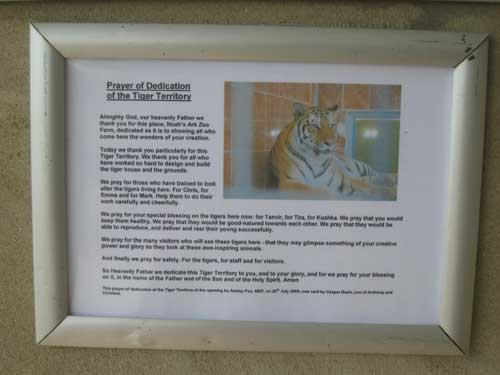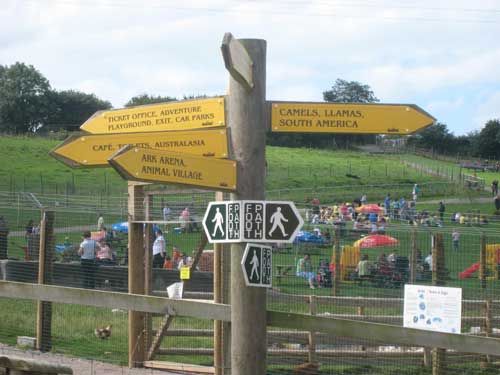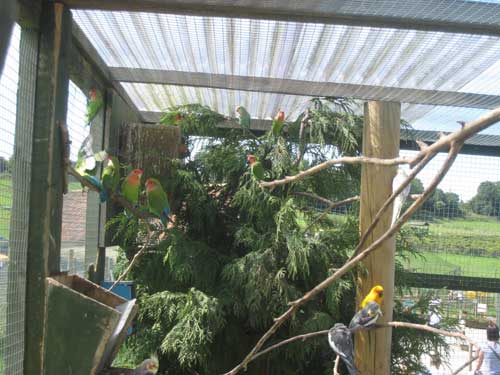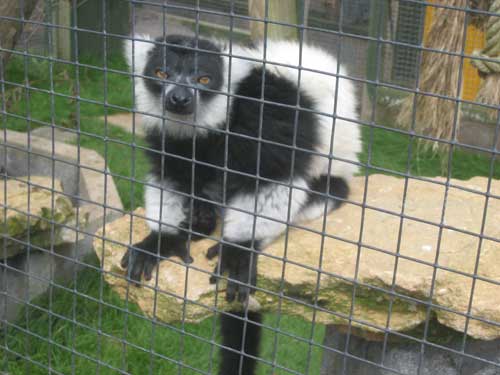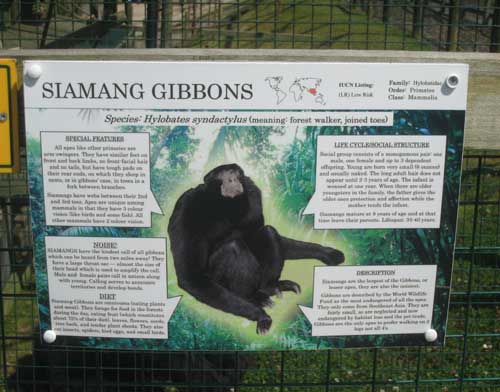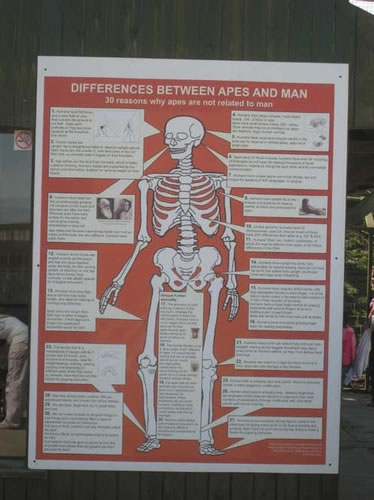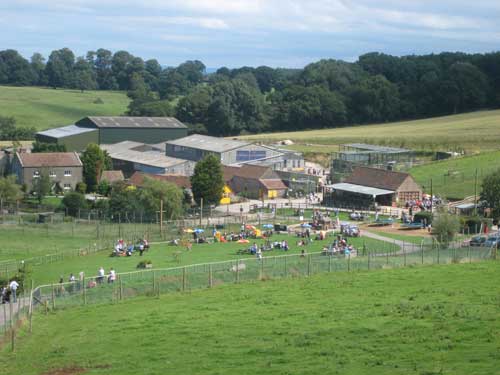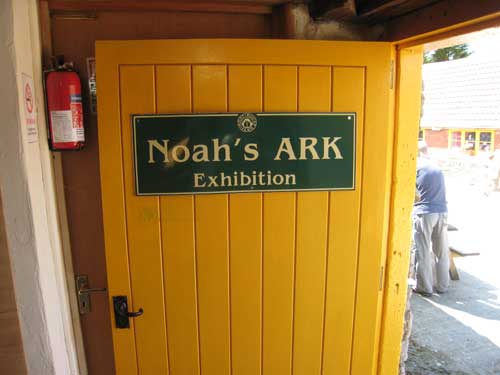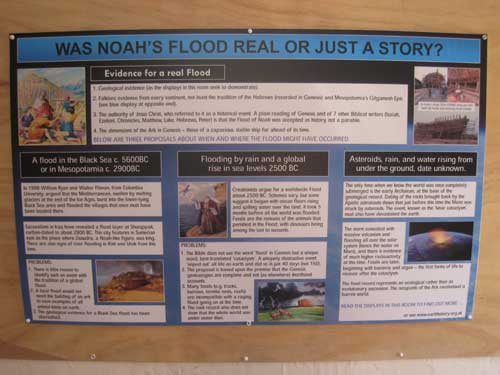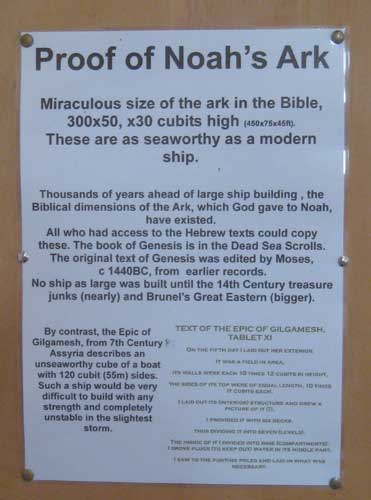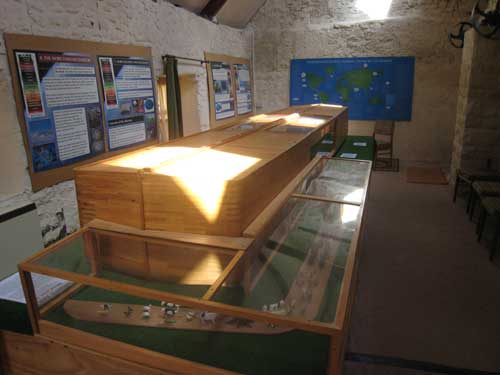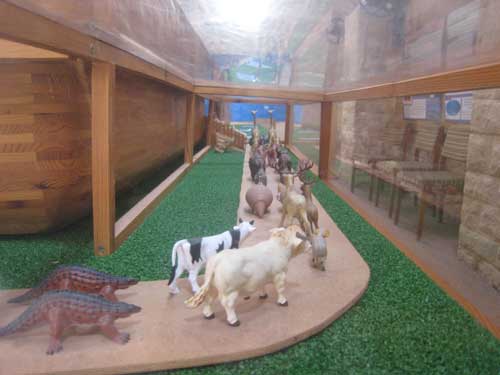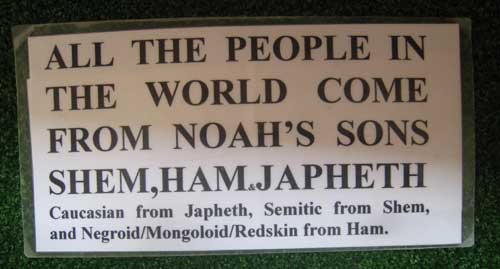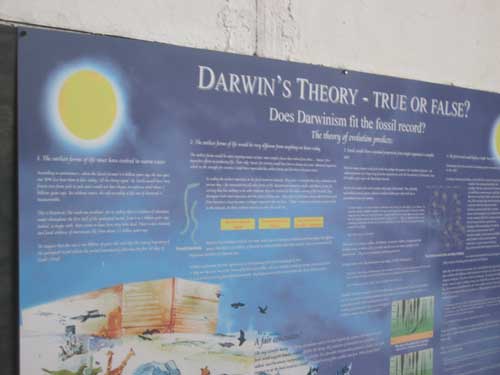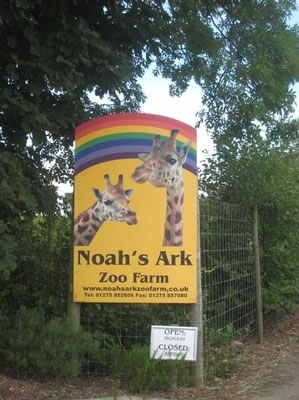 Set in the glorious North Somerset countryside just outside Bristol is Noah’s Ark Zoo Farm, a “unique zoo and working farm”. The clue to what’s “unique” about it is in the name – it’s a creationist zoo run by a Christian couple, Anthony and Christina Bush. At first sight the welcome gate, marked by a colourful sign featuring a pair of giraffes and a rainbow, looks innocuous enough. And judging by the scores of young families queuing to get in when I visited in mid-August, it certainly appeared to be living up to its claim to be “one of the South West’s top tourist attractions”, without any overt proclamation of religion.
Set in the glorious North Somerset countryside just outside Bristol is Noah’s Ark Zoo Farm, a “unique zoo and working farm”. The clue to what’s “unique” about it is in the name – it’s a creationist zoo run by a Christian couple, Anthony and Christina Bush. At first sight the welcome gate, marked by a colourful sign featuring a pair of giraffes and a rainbow, looks innocuous enough. And judging by the scores of young families queuing to get in when I visited in mid-August, it certainly appeared to be living up to its claim to be “one of the South West’s top tourist attractions”, without any overt proclamation of religion.
But the zoo’s owner Anthony Bush seems in no doubt that there is a moral, didactic purpose to the enterprise. “From the outside, our farm is not overtly Christian,” he once told the Church Times. “But, from the inside, we are very strongly Christian. I am a Creationist, and we see the farm as a mission station to give people scientific permission to believe in God.”
This clear missionary vision was in no way evident from the sign on the admission kiosk proclaiming the zoo to be “An Enjoy England Quality Assured Visitor Attraction”, and indeed it is a well-established tourist attraction in the Bristol area, with membership of both the Bristol and South West tourist boards. It has even, as the thank-you letters from children adorning the walls of the play area testify, been successful in attracting educational visits from local schools. It’s also a member of the British and Irish Association of Zoos and Aquariums (BIAZA), the professional body dedicated to supporting the “best zoos” in the country.
BIAZA’s director Miranda Stevenson told me that the zoo’s evangelical mission is not the main issue for her organisation. “Our primary concern,” she explained, “is how zoos manage their animal collections – that they comply with reputable, modern standards of husbandry and welfare. Initially Noah’s Ark didn’t meet many of those criteria, but we mentored the owners and their staff for three years, welfare improved and the zoo became a full member in 2007.”
And it’s easy to see why she seemed unconcerned by the creationist message. At first glance, it’s simply not in evidence. The first enclosure I came to was the aviary where most of the information on display was basic, established scientific facts about the animals. A large poster about bird eggs informed me that “most incubation is shared between male and female” and that egg shell “is made from calcium carbonate”. So far, so uncontroversial. But then my attention turned to a section further down the poster on the “complexity of eggs”, which explained that “The astonishing amount of information in the Egg germ cell, that produces all the feathers, their colour, the ability to fly, to hunt for food, find a mate, to build a nest, reproduce, to sing, and to enrich the world, speaks clearly and powerfully of its Creator and ours.” And this was only the beginning of my education. Moving on to a poster on birdsong, I learned that while birds sing to “sound warning” and “mark their territory”, they also do so in order to “praise their Maker”. In fact, so wonderful is the ability of birds to sing that the necessary features clearly “go far beyond what is biologically an advantage, and point to a musically minded Creator.”
Rather than providing the headlines, creationist propaganda like this was more often than not inserted alongside established science. Unless you are actually looking for the creationism you might not even notice it. Moving in the direction of the zoo’s brand new centrepiece, the Tiger Territory, I passed reindeer, bison, yaks and ostriches. None of their signs contained anything other than factual, if rather simplistic, information. But at the Tiger Territory, which opened this summer following the arrival of their two Bengal tigers, Kushkja and Tanvir, you are greeted by a “Prayer of Dedication of the Tiger Territory”, which asked God for his “special blessing on the tigers”. There’s a similar prayer just up the hill at the rhino enclosure, alongside a sign containing facts about the rhino’s evolution, including the surprising claim that rather than evolving they sprang into being, fully formed: “it is likely that God’s earliest design for the rhino had both nose horns and hair, but these were lost in some species later” and “rhinos appear, like other mammal families, suddenly in the fossil record”.
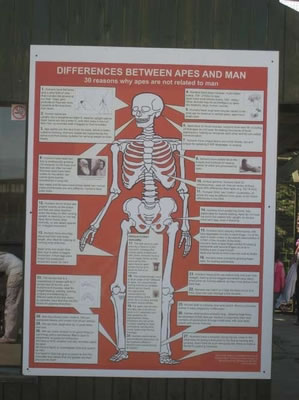 More outlandish “scientific facts” were waiting for me at the gibbon enclosure. The sign introducing the gibbons was uncontroversial, but around the side of the enclosure was a giant poster explaining “30 reasons why apes are not related to man”, which argued that biological differences, such as apes’ possession of 24 pairs of chromosomes to humans’ 23, “prove” that there is no relationship between the species. Theology is mingled with the pseudo-science, as in reason number 30: man and apes cannot share a common ancestor because “Our belief in God can give us power to love the unlovable and values that are greater than physical life itself.”
More outlandish “scientific facts” were waiting for me at the gibbon enclosure. The sign introducing the gibbons was uncontroversial, but around the side of the enclosure was a giant poster explaining “30 reasons why apes are not related to man”, which argued that biological differences, such as apes’ possession of 24 pairs of chromosomes to humans’ 23, “prove” that there is no relationship between the species. Theology is mingled with the pseudo-science, as in reason number 30: man and apes cannot share a common ancestor because “Our belief in God can give us power to love the unlovable and values that are greater than physical life itself.”
If there is a degree of subtlety to the way creationism is inserted in the animal information, the veil is well and truly ripped aside in the “Noah’s Ark Exhibition”, an indoor display whose centrepiece is Anthony Bush’s 14-foot scale model of the Ark itself, “designed to Bibical sizes”, the sign boasts, after more than 1,000 hours of labour by a professional model maker. Inside the glass cabinet animals, including dinosaurs, make their way on to the Ark in two-by-two formation. Posters explain how the great flood – an event “confirmed” by both written and geological records – came about as a result of “three simultaneous events: the eruption of the subterranean deep, the opening of the ‘windows of heaven’ and a downpour of torrential rain”, and how Noah and his family set about rebuilding civilisation. Thanks to some information cards dotted around the Ark, I also learned that “Eating meat was allowed after the Flood” but “Before this most people might have been veggies” (you have to admire that “might”), and received an enlightening insight into creationist racial theory, discovering that “All the people in the world come from Noah’s sons Shem, Ham and Japheth. Caucasian from Japheth, Semitic from Shem, and Negroid/Mongoloid/Redskin from Ham.”
While the zoo itself was been busy, the same couldn’t be said for the Noah’s Ark Exhibition – with the exception of one elderly man who told me it had never occurred to him “just how huge the Ark must have been”, the only person paying much attention to it was me. The zoo’s creationism could come across as something of a sideshow; after all, aren’t people really here to see the animals, and what do a few prayers and alternative theories of evolution really matter? This, certainly, is the current view of BIAZA’s Miranda Stevenson, who told me that though they were potentially “concerned about the creationism” and “keep an eye on what Anthony Bush is doing”, they felt that “The creationism doesn’t appear to be taught explicitly, it is in a separate area in the Noah’s Ark exhibition” and that their website similarly separates established science from religion and “abides by the national curriculum”. But is this really the case? I found no such clear separation, either in the animal enclosures or even in the leisure areas.
 In the “Arkiventures Play Barn” the trampolines, climbing frames and slides are surrounded by posters explaining Anthony Bush’s “creation plus evolution” theory for the development of life on Earth. These wallcharts detail Bush’s bold “new approach encompassing a creator God AND pre-programmed evolution” and his attempt to challenge both established evolutionary science and US-style “young earth” creationism. He thinks the young earthers’ claim that the earth is only 6,000 years old is ludicrous; it’s far older than that, he argues, perhaps even as much as 100,000 years of age (the Darwinist propagandists at the Natural History Museum age the earth at around 4.6 billion years).
In the “Arkiventures Play Barn” the trampolines, climbing frames and slides are surrounded by posters explaining Anthony Bush’s “creation plus evolution” theory for the development of life on Earth. These wallcharts detail Bush’s bold “new approach encompassing a creator God AND pre-programmed evolution” and his attempt to challenge both established evolutionary science and US-style “young earth” creationism. He thinks the young earthers’ claim that the earth is only 6,000 years old is ludicrous; it’s far older than that, he argues, perhaps even as much as 100,000 years of age (the Darwinist propagandists at the Natural History Museum age the earth at around 4.6 billion years).
BIAZA’s sanguine view of the zoo is not shared by Professor Paul Harvey, Head of Zoology at Oxford University. “The zoo is conflating science with religion,” he told me. “They are proposing a two-stage process: initial creation followed by evolution through natural selection. The first is not open to scientific testing while the second is. This is educationally unacceptable.”
It is this distortion of science that worries the British Humanist Association. “The zoo misleads the public by not being open about its creationist agenda in its promotional activities,” said Andrew Copson, the BHA’s Director of Education. “This is a real problem in their work with schools, since pupils visiting the zoo will be exposed to unscientific opinions which encourage a misunderstanding of the natural world.” As such, the BHA have asked local authorities to advise their schools not to use Noah’s Ark for educational visits and have asked the South West England and Visit Britain tourist boards – which are public bodies – to stop promoting the zoo. Similarly, a local campaign, Sink the Ark, has sprung up online, with the aim of compelling the zoo “to be open about their creationist agenda, stop marketing to schools and stop purporting to be supporting the national curriculum.” Like the BHA, those behind Sink the Ark are urging organisations like BIAZA and the tourist boards to remove their support from Noah’s Ark, and asking local authorities to discourage educational visits.
As Noah’s Ark Zoo Farm continues to thrive in the Somerset countryside – last year it attracted over 120,000 visitors – does it represent evidence of an increase in the influence of British creationists? What I saw suggests the zoo is hardly making a huge impact on the public understanding of science, as most visitors don’t seem to notice or care what the signs say. This is true of zoos in general, which many families visit to see the cute animals rather than learn about where they came from. It would be wrong to count visitors to the zoo as necessarily converts to creationism.
And yet the subtle insertion of pseudoscience into the zoo’s literature is likely to impact on particularly inquisitive children, who in their quest for knowledge see zoos as a source of authority. This is why the creationism dotted around Noah’s Ark Zoo Farm is so insidious, laying a false intellectual trail for any children eager to follow it. When I put my questions concerning the zoo’s aims to Anthony Bush he declined to answer, instead writing to tell me that “all the answers are either here on our displays or ‘out there’ on the web anyway” (and adding that he was too busy dealing with “record crowds” generated by the “wonderful publicity given to us by the Sink the Ark initiative”).
We shouldn’t get hysterical about one small farm in Somerset. This is, after all, the land that gave the world David Attenborough’s Life on Earth and, for those in search of knowledge, world-class, scientifically credible zoos still vastly outnumber this creationist example on the edge of Bristol. Noah’s Ark Zoo Farm is a lone voice in the wilderness, without influence or credibility. Yet this is no reason to be complacent. In particular we need to question the role of public bodies in endorsing the activities of places, like Noah’s Ark, that claim to fulfil an educational function, and of professional bodies like BIAZA. Isn’t it time that to their evident concern for animal welfare they add a concern for verifiable scientific fact?
Miranda Stevenson uses the free speech argument to suggest that it is Anthony Bush’s right to promote a version of evolutionary biology that is at odds with established scientific understanding. But is this anything more than a fig-leaf? Is there a right to inculcate misleading information? Stevenson admits that “If we felt that [Anthony Bush] was promoting something that was causing significant numbers of children to question evolution, that could be an issue.” The question is: what counts as a significant number? How many inquisitive young minds convinced by misleading information that Darwin was wrong would BIAZA, or should we, be prepared to accept?
This article is from the forthcoming September/October 2009 issue of New Humanist magazine
Update: since this article was published, Noah's Ark Zoo Farm has been expelled from BIAZA over animal welfare issues. More details here.
